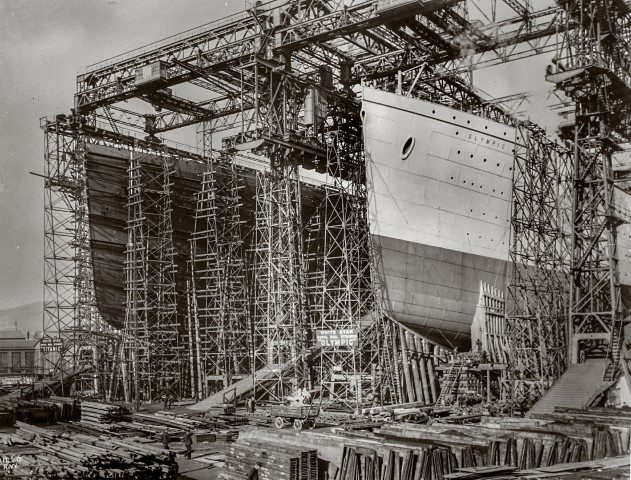
Fortunately, some of the shipyard heritage has survived, including a number of slipways, dry docks and pumphouses. While Harland & Wolff’s yellow cranes still dominate the skyline, a welcome reminder that this heavy industry is still very much in business, many of the buildings once associated with the shipyards on Queen’s Island, such as the engineering works, brass works and the Arroll Gantry, have gradually disappeared. Over the past ten years the 180-acre site has witnessed radical changes, evolving from one of the largest shipyards in the world to a hub of financial services, tourist attractions, education facilities and residential accommodation. Titanic Quarter, just a 20-minute walk from Belfast City Centre, is one of Europe’s largest waterfront transformations. The slipways, covering an area of approximately 4.5 acres, is the largest Titanic memorial, by area, in the United Kingdom.The hotel with Titanic Belfast in the background. Reflections of a Shipyardman Thomas Carnduff We raised a monument of fame Upon these banks and thus unfurled An honoured scroll to Ulster's name Unequalled yet around the world The glass panels also carried the following quotes:īy a high star our course is set, Our end is Life. In memory of the eight men who died during the construction and launch of Titanic In memory of the men, women and children who lost their lives during the sinking of Titanic Each slipway has ten glass panels, etched with the names of the Titanic's victims and those who died during the construction of the ship. Slipway number two, where the Olympic's hull was built, forms the Titanic Garden, with alternating grassed and paved areas sized proportionally for the numbers of survivors and victims in the three passenger classes and crew.Īs part of the regeneration of the Titanic slipways glass panels carrying the names of the Titanic's victims were affixed to the head of each slipway. The former slipways are now paved over the former slipway number three, where the Titanic's hull was built, has the outline of the Titanic inlaid in white stone. The landscaping was completed in time for the opening of the Titanic Belfast attraction at the end of March 2012. The landscaping includes lamp posts, spaced to represent the original towers of the gantry and illuminated outlines in the shape of the Olympic and Titanic's hulls. Today the only surviving elements of slipways number 2 and 3 are the two concrete ramps at the landward end of the former slipways, and the railway tracks embedded into the concrete base. For many years the open space of the slipways was used as a car park, but following the opening of the Titanic Belfast visitor attraction the slipways were landscaped. The gantry was finally torn down in the 1960s. The gantry and slipways were used continuously for many decades constructing the three vessels of the Olympic class (Olympic, Titanic and Britannic) and the last White Star liners Britannic and Georgic, which were built on slipways number 2 and 3 respectively. The weight of the entire structure and equipment is upward of 6,000 tons". Shipbuilder reported that the "total height of the structure from the ground at slip level to the top of the upper crane is no less than 228 feet.

The gantry was spanned by multiple cranes, with the central crane capable of lifting a maximum of five tons.

The area covered exceeds 840 feet long by 270 feet wide."

The towers at their base are about 21 feet by 9 feet and are fixed in solid concrete resting upon 40 feet piles. each row containing eleven towers spaced 80 feet centre to centre. The Shipbuilder periodical described the gantry as consisting of "three rows of towers spaced 121 feet between the rows. Built over a reinforced steel base, supported by piles driven deep into the ground, the slipways were spanned by a giant steel gantry built by the Glasgow firm of Sir William Arrol & Company. The slipways were built specifically to allow the construction of the new liners, but such was their size the new slipways occupied the space previously taken by three slipways at the yard. The Olympic class liners were built on two massive slipways, numbered 2 and 3, at the Harland and Wolff shipyard in Belfast.


 0 kommentar(er)
0 kommentar(er)
